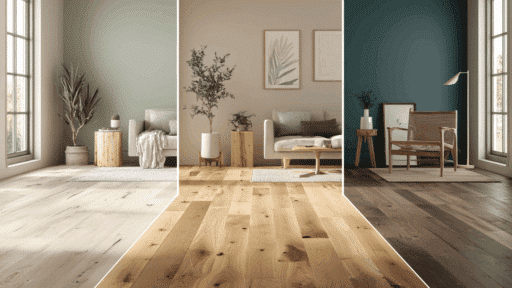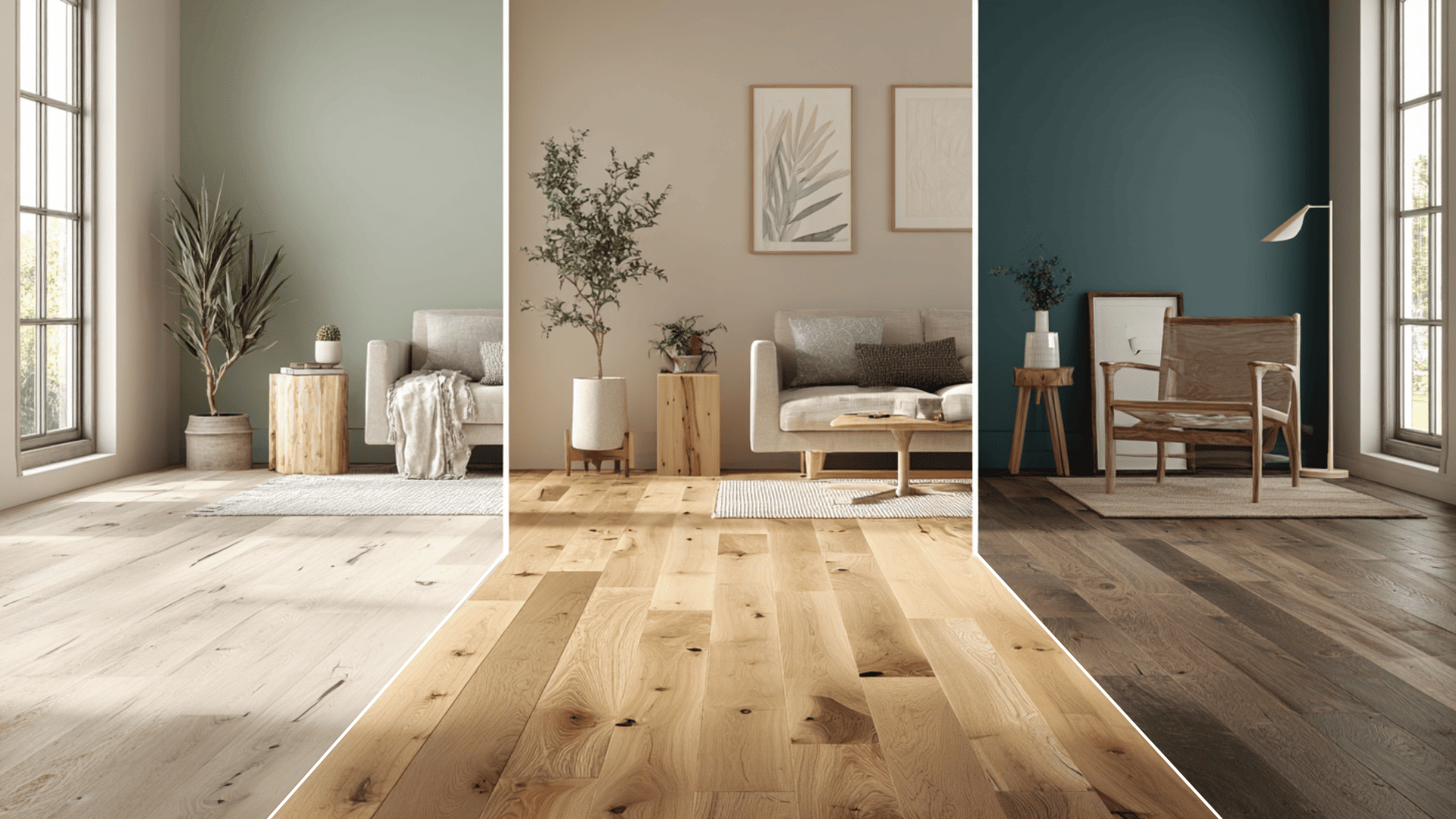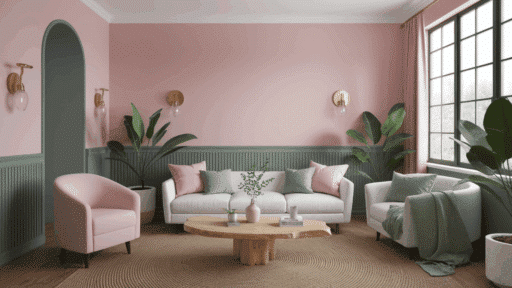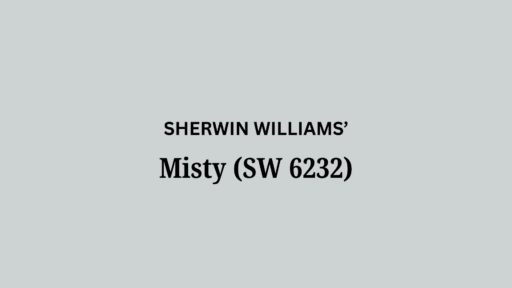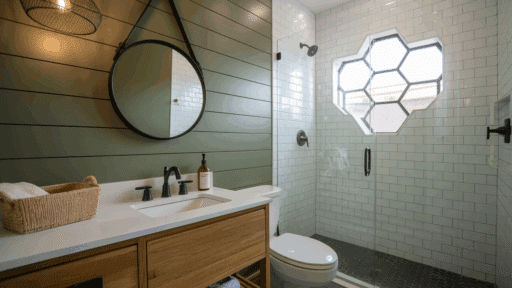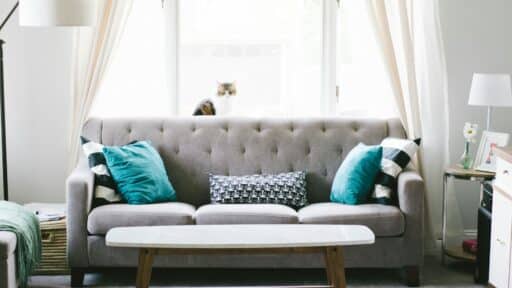Ever paint a room, step back, and realize something feels… off? Chances are, your wall color is clashing with your wood floor.
If you’re working with light oak, rich walnut, or dark mahogany, your floor’s undertone plays a huge role in how paint reads in your space.
From warm, golden hues to cool, gray tones, every wood species has a subtle personality that requires the right color partner. And that’s where this comes in.
We’ll walk you through the best wall colors for every wood tone, show you how lighting and grain affect your choices, and even help you match paint to your style; Scandi, farmhouse, or bold modern.
Say goodbye to guesswork and hello to a space that finally feels pulled together. Let’s find your perfect match.
Understanding Wood Floor Undertones
Your wood floor has a unique personality, and understanding it is the first step to achieving perfect color matching. Every piece of wood contains subtle color hints that will either complement or clash with your wall choice.
Before selecting any paint, you need to identify the true character of your wood floor. Every wood species has undertones, the subtle colors that peek through the main wood color.
Warm undertones include hints of red, yellow, and orange. You’ll find these in:

- Oak (golden yellow undertones)
- Cherry (rich red undertones)
- Hickory (warm orange undertones)
Cool undertones reveal hints of gray, blue, or green. Common in:

- Ash (gray undertones)
- Gray-washed woods (blue-gray undertones)
- Maple (subtle gray undertones)
Here’s a simple test: Hold a white sheet of paper against your floor in natural light. The undertones will become more obvious against the pure white background. You can also use paint sample cards in true white to make undertones pop.
How Grain and Color Saturation Affect Wall Paint Choices
The texture and grain pattern of your wood significantly influence how wall colors appear in your space.
Wide-plank floors with prominent grain patterns create natural visual interest and texture, allowing them to handle bolder, more saturated wall colors without the room feeling overwhelming. The grain serves as a visual anchor, balancing strong color choices.
Smooth, narrow planks provide a more uniform surface that complements softer, subtler color selections. Too much visual competition between busy wall colors and sleek flooring can create chaos.
Light wood floors act like natural reflectors, bouncing light around the room and making wall colors appear brighter and more saturated than expected.
Dark wood floors absorb light, which can make wall colors look muted, duller, or completely different from how they appeared on the paint sample.
Best Wall Colors for Different Wood Floor Shades
Not all wood floors are created equal, and each shade requires its own color strategy. The key is matching the intensity and temperature of your wall color to your specific wood tone.
Light Hardwood
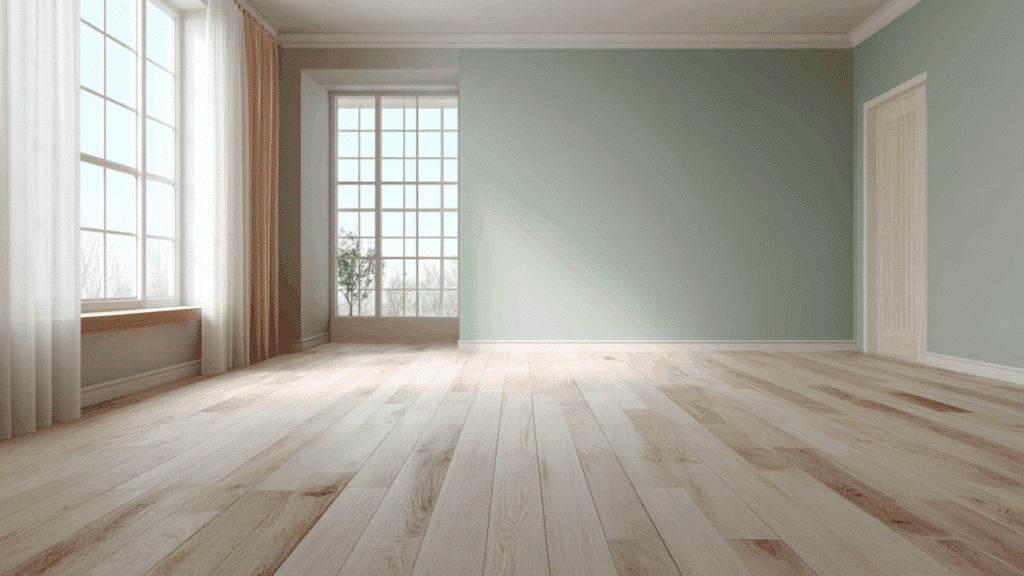
Light hardwood floors like maple, birch, or pale oak give you the most flexibility. These floors typically feature cool undertones, making them an ideal complement to a wide range of wall colors.
Top color choices for light hardwood:
- Neutral whites: Choose whites with subtle gray or blue undertones rather than yellow-based whites
- Greige: Gray-beige blends that bridge warm and cool tones
- Soft taupes: Warm neutrals that add coziness without overwhelming the space
- Muted greens: Sage, eucalyptus, or sea glass tones create a fresh, natural feel
Contrast vs tone-on-tone approach:
- For contrast: Pair light floors with medium-toned walls like soft gray or muted blue
- For tone-on-tone: Use light, airy colors that stay within the same value range as your floors
What to avoid: Bright yellow or cream-based whites can clash with cool-toned light hardwood, making your space look dated.
Medium-Toned Woods (Oak, Acacia, Walnut)
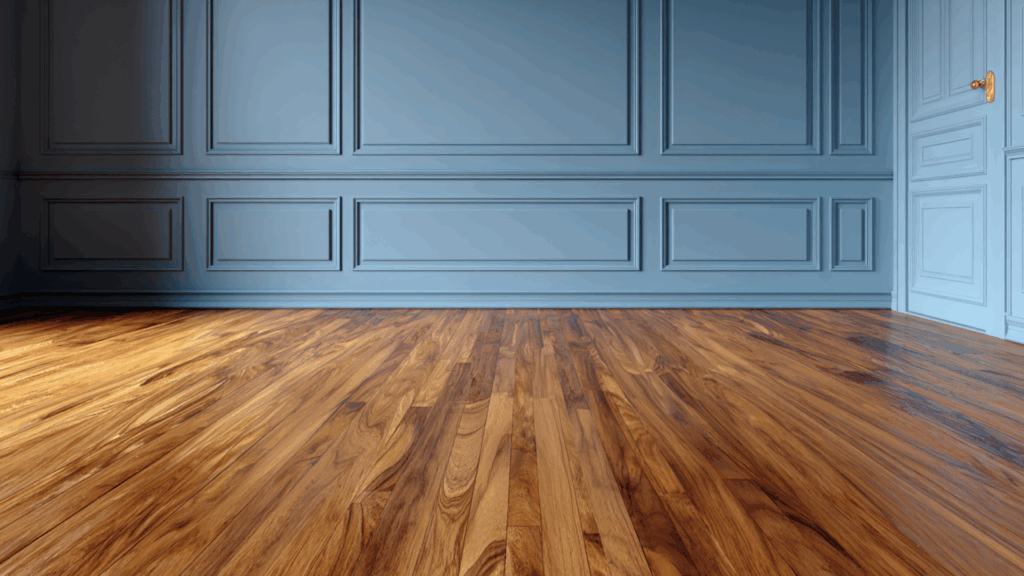
Medium wood tones are the most versatile and work with both warm and cool wall colors. These floors strike the perfect balance between light and dark, giving you flexibility to go bold or stay neutral.
Best options:
- Earthy greens: Olive, sage, or forest green complement the natural wood tones
- Warm beiges: Create a cozy, traditional feel
- Soft blues: Navy, powder blue, or dusty blue add sophistication
- Warm whites: Off-white or cream tones enhance the wood’s natural warmth
Contrast vs tone-on-tone approach:
- For contrast: Pair medium wood with lighter walls like soft white or pale gray, or go bold with darker accent walls in navy or deep green
- For tone-on-tone: Use medium-toned walls like warm beige or sage green that match the floor’s intensity for a cohesive, flowing look.
What to avoid: Bright, saturated colors like hot pink or electric blue can overwhelm medium wood tones, and pure white can look too stark with very warm woods like cherry.
Dark Wood Floors

Dark floors, such as ebony, mahogany, or dark walnut, require lighter walls to prevent your room from feeling cave-like. These dramatic floors make a strong statement and need careful color balance to maintain an inviting atmosphere.
Winning combinations:
- Cool grays: Light to medium gray keeps the space feeling modern and bright
- Deep greens: Hunter or forest green creates a rich, elegant contrast
- Blush tones: Soft pink or peach adds warmth without competing with the floor
- Creamy whites: Warm whites prevent stark contrast while brightening the space
Contrast vs tone-on-tone approach:
- For contrast: Pair dark floors with light, bright walls like crisp white or pale gray to maximize brightness
- For tone-on-tone: Use deeper neutrals like mushroom gray or warm taupe that complement the floor’s richness without going too light.
What to avoid: Dark or bold wall colors will make your room feel cramped and gloomy, while very cool whites can create an unwelcoming, sterile contrast with warm dark woods.
Wall Colors by Interior Style
Your style should guide your color choices just as much as your wood floor tone. Different design styles require specific color approaches to enhance the overall aesthetic you aim to achieve.
Scandinavian & Minimalist
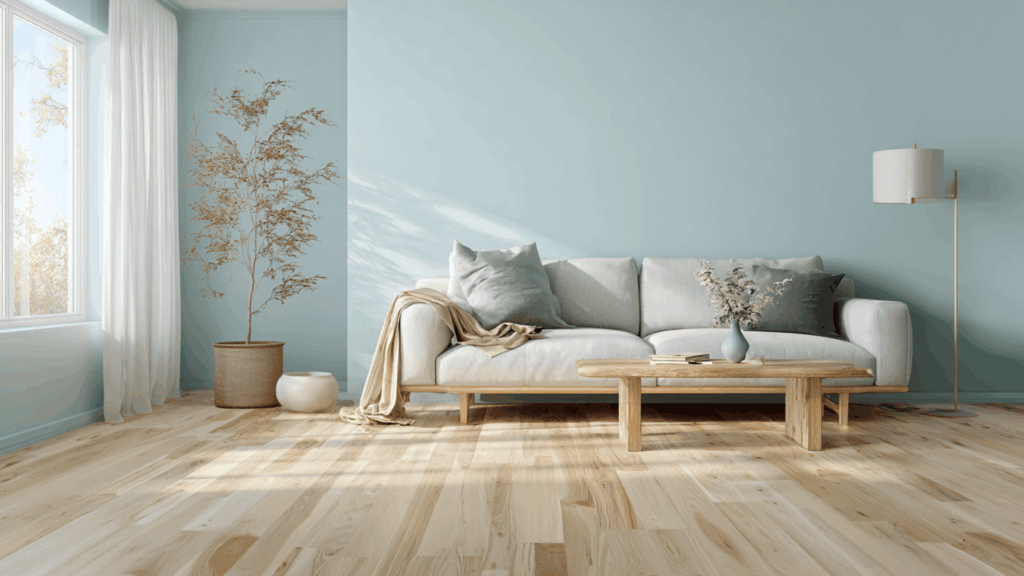
This style celebrates light wood floors paired with clean, simple wall colors. The focus is on creating calm, uncluttered spaces that feel bright and peaceful. Every color choice should enhance the natural beauty of the wood while maintaining a sense of serenity and simplicity.
Perfect pairings:
- Light wood + soft gray for understated elegance
- Light wood + pale blue for a fresh, airy feel
- Light wood + bright white for maximum light reflection
Pro tip: Keep your color palette limited to 2-3 shades maximum, and choose furniture and decor in natural materials like linen, wool, and untreated wood to maintain the authentic Scandinavian aesthetic.
Farmhouse & Rustic

Embrace warmth and comfort with these cozy combinations. This style celebrates natural materials and earthy tones that make any space feel like a welcoming retreat. The goal is creating rooms that feel lived-in and inviting, where every color choice supports a sense of home.
Signature looks:
- Medium wood + warm taupe for classic farmhouse appeal
- Light wood + sage green for modern farmhouse style
- Any wood tone + off-white for timeless country charm
- Medium wood + soft terracotta for southwestern flair
Pro tip: Layer different textures like woven baskets, linen curtains, and vintage accessories to enhance the rustic feel and prevent your color scheme from looking flat or one-dimensional.
Modern & Bold
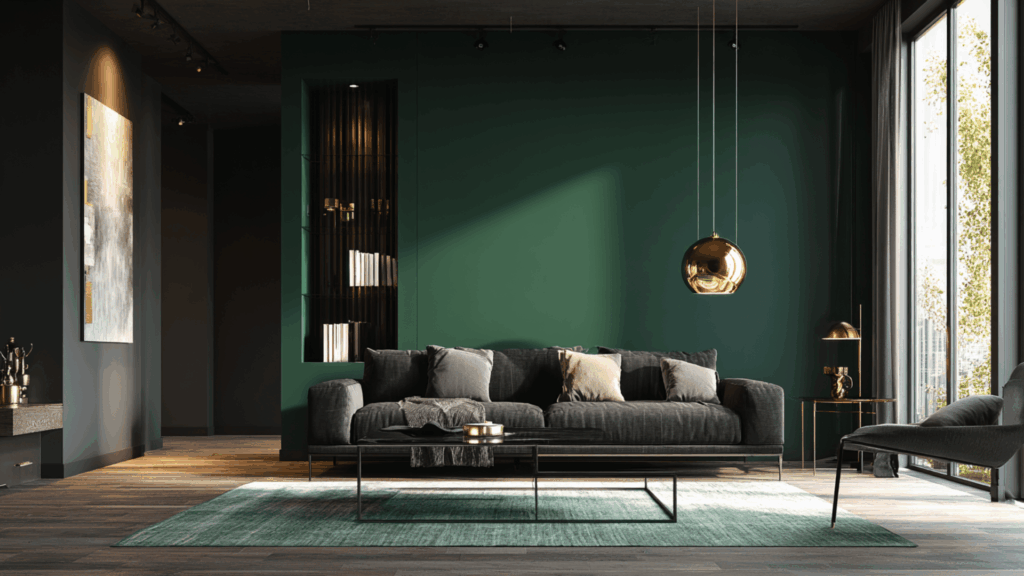
Create drama with high-contrast combinations that make a statement. This style embraces bold choices and isn’t afraid to pair unexpected colors with natural wood tones.
The key is confidence; when done right, these combinations create spaces that feel intentional and striking.
Eye-catching options:
- Light wood + charcoal gray for sleek sophistication
- Medium wood + navy blue for rich, moody vibes
- Dark wood + jewel tones like emerald or sapphire for luxury appeal
Pro tip: When using bold, dark colors with wood floors, add plenty of lighting and light-colored accessories to prevent the space from feeling too heavy or closed in.
Tips for Sampling Paint Colors with Your Wood Flooring
Digital tools are helpful, but nothing replaces real paint samples in your actual space.
Smart sampling strategy:
- Paint large swatches (at least 12×12 inches) on different walls
- Observe samples at various times: morning, afternoon, and evening
- Check how artificial lighting affects the colors at night
- Live with samples for at least 3-4 days before deciding
Lighting considerations:
- North-facing rooms get cool, consistent light all day
- South-facing rooms receive warm, bright light
- East and west rooms change dramatically throughout the day
Avoiding Color Clashes: Pro Wall and Floor Matching Strategies

Even with the best intentions, it’s easy to make color choices that don’t work together. These professional strategies will help you create combinations that look intentional and polished.
- Match undertones, not exact colors – Your wall color doesn’t need to match your floor exactly. Instead, make sure the undertones work together. Cool-toned floors pair well with cool-toned walls, and warm-toned floors complement warm-toned walls.
- Balance warm and cool mixes with accessories – If you want to mix warm and cool tones, use area rugs, curtains, or artwork to bridge the gap between floor and wall colors.
- Use trim and ceiling colors strategically – White or light-colored trim can help separate contrasting wall and floor colors. A ceiling color that’s slightly lighter than your walls creates visual flow from floor to ceiling.
- Consider the room’s purpose – Bedrooms benefit from calming, restful colors. Living areas can handle more energy and contrast. Kitchens work best with clean, fresh tones.
- Start with neutrals if unsure – Gray, beige, and white variations work with almost any wood floor and give you flexibility to add color through accessories later.
Final Thoughts
Now you know how to match wall color with wood floors like a pro, from spotting undertones to choosing colors that complement your style and lighting. If you want cozy, clean, or dramatic, it all starts with the floor under your feet.
Still unsure? Start with neutral tones, sample in real light, and let your floor guide your decision. You’ve got everything you need to get it right.
Ready to test colors? Try a few swatches this week and see how they shift in natural and evening light.
Save this guide or share it with a friend planning a makeover. Beautiful results are just a paintbrush away.

